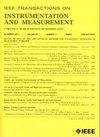A Novel EEG-Based Parkinson’s Disease Detection Model Using Multiscale Convolutional Prototype Networks
IF 5.6
2区 工程技术
Q1 ENGINEERING, ELECTRICAL & ELECTRONIC
IEEE Transactions on Instrumentation and Measurement
Pub Date : 2024-01-09
DOI:10.1109/TIM.2024.3351248
引用次数: 0
Abstract
Objective and accurate detection of Parkinson’s disease (PD) is crucial for timely intervention and treatment. Electroencephalography (EEG) has been proven to characterize PD by measuring brain activity. In recent years, deep learning methods have gained great attention in automated PD detection, but their performance is limited by insufficient data samples. In this article, we propose a novel PD automated detection model named the multiscale convolutional prototype network (MCPNet), which integrates and improves upon multiscale convolutional neural networks (CNNs) and prototype learning. On the one hand, it employs multiscale CNNs to extract brain features from different scales, enhancing feature diversity and utilization. On the other hand, a prototype calibration strategy is introduced to mitigate the effect of data noise on prototype generation, improving the generalization performance of model. Multiple within-dataset and cross-dataset experiments on three different datasets demonstrate the effectiveness of our model in PD detection. The leave-one-subject-out (LOSO) results of within-dataset experiments show that MCPNet achieves an accuracy of 92.5%, a sensitivity of 93.1%, a specificity of 91.9%, and an AUC of 92.4% in cross-subject classification between PD patients and healthy controls. In the cross-dataset classification, the performance of MCPNet is somewhat weakened due to dataset variations. However, this weakening is partially compensated by introducing the prototype calibration strategy. With the introduction of the calibration strategy, the accuracy of cross-dataset classification increases to 90.2%, a 4.0% improvement compared to when it is not used. These results indicate that the proposed model may be a promising tool for automated PD diagnosis.使用多尺度卷积原型网络的基于脑电图的新型帕金森病检测模型
客观准确地检测帕金森病(PD)对于及时干预和治疗至关重要。脑电图(EEG)通过测量大脑活动已被证明可以描述帕金森病的特征。近年来,深度学习方法在帕金森病的自动检测中获得了极大关注,但由于数据样本不足,其性能受到限制。本文提出了一种名为多尺度卷积原型网络(MCPNet)的新型 PD 自动检测模型,它整合并改进了多尺度卷积神经网络(CNN)和原型学习。一方面,它利用多尺度卷积神经网络从不同尺度提取大脑特征,提高了特征的多样性和利用率。另一方面,引入原型校准策略,减轻数据噪声对原型生成的影响,提高模型的泛化性能。在三个不同数据集上进行的多个数据集内和跨数据集实验证明了我们的模型在脊髓灰质炎检测中的有效性。数据集内实验的 "leave-one-subject-out"(LOSO)结果表明,MCPNet在脊髓灰质炎患者和健康对照组的跨主体分类中达到了92.5%的准确率、93.1%的灵敏度、91.9%的特异性和92.4%的AUC。在跨数据集分类中,由于数据集的差异,MCPNet 的性能有所减弱。不过,通过引入原型校准策略,这种削弱得到了部分弥补。引入校准策略后,跨数据集分类的准确率提高到 90.2%,比未使用校准策略时提高了 4.0%。这些结果表明,所提出的模型可能会成为一种很有前途的自动 PD 诊断工具。
本文章由计算机程序翻译,如有差异,请以英文原文为准。
求助全文
约1分钟内获得全文
求助全文
来源期刊

IEEE Transactions on Instrumentation and Measurement
工程技术-工程:电子与电气
CiteScore
9.00
自引率
23.20%
发文量
1294
审稿时长
3.9 months
期刊介绍:
Papers are sought that address innovative solutions to the development and use of electrical and electronic instruments and equipment to measure, monitor and/or record physical phenomena for the purpose of advancing measurement science, methods, functionality and applications. The scope of these papers may encompass: (1) theory, methodology, and practice of measurement; (2) design, development and evaluation of instrumentation and measurement systems and components used in generating, acquiring, conditioning and processing signals; (3) analysis, representation, display, and preservation of the information obtained from a set of measurements; and (4) scientific and technical support to establishment and maintenance of technical standards in the field of Instrumentation and Measurement.
 求助内容:
求助内容: 应助结果提醒方式:
应助结果提醒方式:


